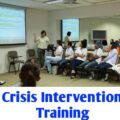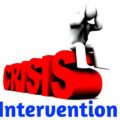What is Nonviolent Crisis Intervention?
Non-Violent Crisis Intervention can be defined as the use of a holistic behavior management system based on the philosophy of providing the best care, welfare, safety, and security for staff and those in their care, even during the most violent moments. Non-Violent Crisis Intervention focuses on preventing disruptive behavior by communicating with individuals respectfully and with concern for their well-being. It teaches physical interventions to be used only as a last resort-when an individual presents an imminent danger to self or others-and all physical interventions taught are designed to be non-harmful, non-invasive, and to maintain the individual’s dignity. Examples of where non-violent crisis intervention may be used include correctional facilities, educational facilities, and mental health facilities.
Use Of Nonviolent Crisis Intervention Strategies
(1) Non-violent crisis intervention program should have written policies and procedures governing the appropriate use of nonviolent crisis intervention strategies, including:
(a) the use of de-escalation techniques;
(b) physical assists; and
(c) physical restraints.
(2) The nonviolent crisis intervention strategies, policies, and procedures must comply with the following:
(a) Crisis prevention and verbal and non-verbal de-escalation techniques are the preferred methods and must be used first to manage behavior. All staff working directly with youth must be trained in de-escalation techniques. This training must be documented in each staff member’s personnel file.
(b) Appropriate use of physical assistance occurs when staff members physically aid, support or redirect youth who are not physically resisting. Physical assists include staff leading the youth along the trail or moving the youth to his or her campsite by gently pulling on a backpack strap, guiding him or her by the hand or elbow, or placing a hand on the youth’s back. If a youth resists reasonable staff direction, staff must assess whether the use of physical restraint is warranted based on the program’s written physical restraint policy.
(c) Physical restraint must be used to safely control a youth until he or she can regain control of his or her own behavior. Physical restraint must only be used in the following circumstances:
(i) when the youth has failed to respond to de-escalation techniques and/or physical assistance;
(ii) when necessary to prevent harm to the youth or others, or to prevent the substantial destruction of property; or
(iii) when a youth’s behavior puts himself/herself or others at substantial risk of harm and he/she must be forcibly moved.
(d) Physical restraint must be used only until the youth has regained control and must not exceed 15 consecutive minutes. If the youth remains a danger to self or others after 15 minutes, the record must include written documentation of attempts made to release the youth from the restraint and the reasons that continuation of restraint is necessary.
(e) Physical restraint may be used only by employees documented to have been specifically trained in nonviolent crisis intervention techniques.
(f) Program policies must prohibit the application of a nonviolent physical restraint if a youth has a documented physical condition that would contraindicate its use unless a health care professional has previously and specifically authorized its use in writing. Documentation must be maintained in the youth’s record.
(g) Program policies must require documentation of:
(i) the behavior which required physical restraint;
(ii) the specific attempts to de-escalate the situation before using physical restraint;
(iii) the length of time the physical restraint was applied including documentation of the time started and completed;
(iv) the identity of the specific staff member(s) involved in administering the physical restraint;
(v) the type of physical restraint used;
(vi) any injuries to the youth resulting from the physical restraint; and
(vii) the debriefing was completed with the staff and youth involved in the physical restraint.
(h) Program policies must require that whenever a physical restraint has been used on youth more than two times in one week, there is a review by lead clinical staff members to determine the suitability of the youth remaining in the program, whether a modification to the youth’s plan is warranted, or whether staff needs additional training in alternative therapeutic behavior management techniques. The program shall take appropriate action as a result of the review.
(3) The program shall train staff in the therapeutic de-escalation of crisis situations provided through a nationally recognized training system to ensure the protection and safety of the youth and staff. The training must include the use of physical and non-physical methods of managing youth and must be updated at least annually to ensure them.





